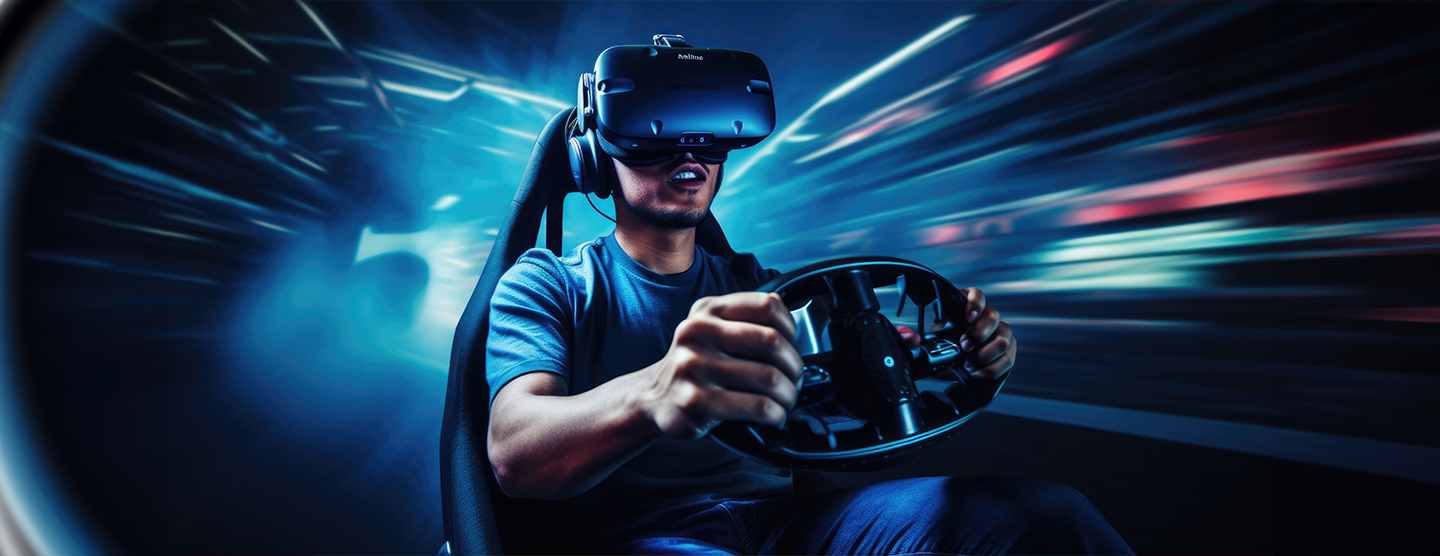Driving Sales Success: The Content Revolution In Automotive
The automotive industry is embracing digitalization to reimagine the customer experience for the last mile. See how technologies like Virtual Reality are putting the VR back in vroom.
By Raj for Red Bangle
05 min read
Jan 29, 2024

In the automotive business, content isn’t just a passenger; it’s the driver navigating the consumer journey from awareness to desire to consideration to purchase.
And at every twist and turn, the right blend of content and immersive technology propels consumers towards the grand finale: the act of purchase.
Join us as we look under the hood, explore the latest content trends, and share insights. Ready to shift gears? Let’s roll into the latest in automotive marketing via the rise of new immersive and interactive content formats.
When Honda flipped the script
Honda was among the pioneers of experimenting with interactive videos. For example, the iconic and timeless film, “Honda — The Other Side.” There were actually two versions of the video, and you could switch them just by pressing R on your keyboard. By pressing the R key, you could watch the life of the driver in two scenarios: day and night. By day he is an ordinary man that picks up the kids at school, and at night he is an undercover agent that works on a mission. Unlike traditional advertising, the Honda R broke new ground by turning the spectator into a ‘player’: she is allowed to participate and even change the course of the story. The original interactive video is no longer live, but you’ve got to check out the demo video for yourself.
Interactive demos and explainers
Traditional advertising videos, static images and text can only convey so much, leaving a gap in the consumer’s understanding of the product. Interactive ads bridge this gap. Imagine being able to virtually sit in the driver’s seat, customize the color and features of a car, and even take a simulated test drive – all from the convenience of your smartphone. Toyota’s new EV launch used interactivity to enrich their demo content with interactive elements such as product cards, maps, polls, and more. Check out the video here.
Virtual showrooms and test drives
Leading car manufacturers are breaking the mold by leveraging virtual reality (VR) and augmented reality (AR) technologies, bringing the showroom experience straight to your living room. Imagine taking a virtual tour, exploring different models, interiors, and features from the comfort of your home. BMW’s Virtual Experience app lets you do just that, allowing you to customize your dream car in real-time. Audi has embraced virtual reality to enhance the showroom experience for customers. The Audi VR Experience app allows users to explore the brand’s range of vehicles in a virtual showroom. Users can configure the cars, visualize them in different environments, and even take test drives in outer space!
Augmented Reality – your car, your way
Immersive content isn’t confined to virtual showrooms; it extends to augmented reality product configurators. Car shoppers are now using their smartphone or AR device to visualize different customization options for their dream car. Porsche’s Augmented Reality Visualizer app does just that, letting you explore configurations and feel the car’s presence in your daily life. It’s personalization on a whole new level, expediting the decision-making process by enhancing your emotional connection with the product.
Product demo through AR
Toyota has created an AR experience to visualize its cars in 3D. The “Says So Much” campaign lets users activate their smartphone cameras to enjoy a 360-degree virtual tour of the sedan’s interiors and exteriors, pausing at “educational hotspots” to gain deeper insights.
Going beta on Meta
In January 2023, Fiat rolled out its Metaverse store, turning the mundane act of shopping into a unique, futuristic experience. The Fiat Metaverse Store proved a lot of skeptics wrong, who had until now thought the Metaverse to be a gimmick.
Fiat’s meta-store is a virtual environment where you interact live with a sales advisor (aka “Fiat genius”). Augmented reality is used to show you the car from every angle.
And the best part? The interactions organized through the Fiat Metaverse Store last 40 minutes, and the decision-making process takes an average of 1.5 to 2 months compared to 3 months via traditional channels.
The challenge: brakes on budgets?
While the advantages of consolidating AR/VR with AI are apparent, the challenge lies in budgets. High-quality data and research are crucial, and VR headset costs can be higher than smartphones. The automotive industry faces the challenge of balancing innovation with budget constraints. For instance, the Fiat Metaverse store worked around it by integrating the Meta experience through Microsoft Teams – without needing any additional VR glasses or hardware.
The road ahead
The next milestone on this journey is said to be around self-service and maintenance. Automotive brands are working on offering interactive manuals and guides using AR to see and interact with different parts of your vehicle. Maintenance tutorials using augmented reality to assist car owners in DIY procedures are on the horizon.
Immersive experiences such as these may be in the early stages of adoption, but they present exciting possibilities for engagement throughout the entire customer journey.
Whether it’s about offering a virtual test drive from your couch, or allowing customers to customize their car with augmented reality, or demonstrating the specs through an interactive video, the future is already here.
Giving automotive brands the chance to not just digitize but to revolutionize the entire customer experience. So buckle up – the road to immersive content starts here and now!


